#parmelia sulcata
Text

#nature#nature core#nature photography#nature photos#naturecore#original photo blog#north#woods#trees#parmelia sulcata#lichen
2 notes
·
View notes
Text


A while back I drew this lichen dragon! This little creature rarely exceeds a foot long, and uses moss and lichens for camouflage as she traverses her arboreal habitat in search of tasty insects to eat. Young lichen dragons are often green to help them stay hidden, but as they grow older and amass a suitable collection of species to cover them their skin changes to a deeper gray and brown. It's not known how the dragons manage to keep their garden-pelts alive; their skin could exude chemicals that add nourishment to what these epiphytes are able to collect from the air, or they may have an adhesive property that helps them stay on their moving host. Lichen dragons are frequently found basking in sunny openings in the tree canopy which allow their symbiotic partners to photosynthesize more effectively.
The antlers and rostral horn are Cladonia bellidiflora, the back features the fruiting bodies of Lichenomphalia umbellifera, the sides and flanks have some layers of Parmelia sulcata, and the tip of the tail has a tuft of Usnea longissima.
Micron fineliners and Copic alcohol markers.
#dragon#dragons#lichens#fungi#traditional art#illustration#traditional media#Copics#art#fantasy#fantasy art#nature#lichen dragon
77 notes
·
View notes
Text
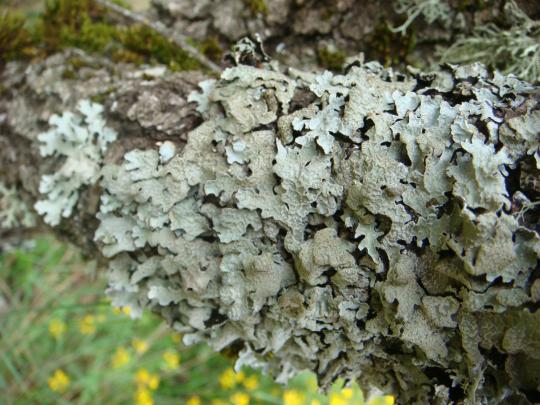
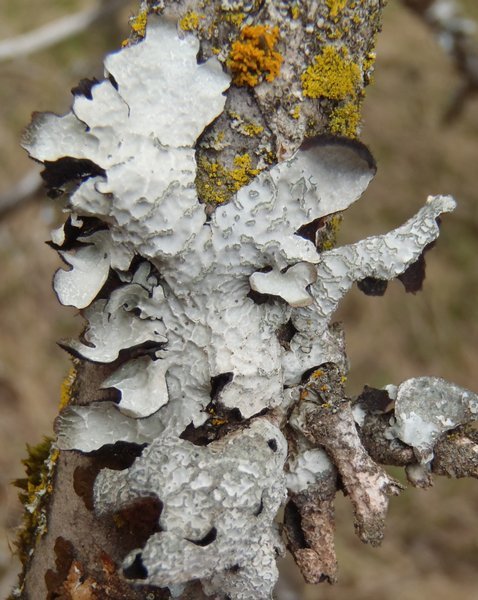



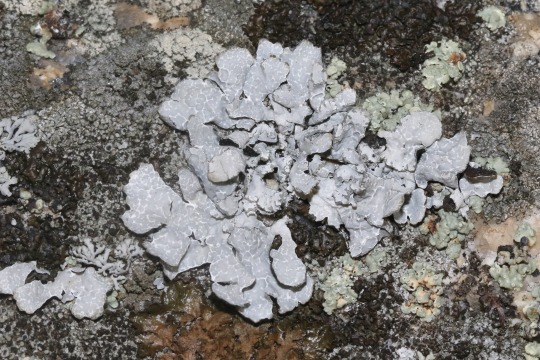

Parmelia barrenoae
This foliose lichen has a rosette-forming thallus up to 10 cm in diameter made up of overlapping, linear, round-tipped lobes. The upper surface is gray-green, and pitted and cracked with a fine network of white pseudocyphellae which can produce granular soredia when eroded. The lower surface is black and covered in black, simple or forked rhizines. It is incredibly difficult to distinguish from sister-species P. sulcata and so its distribution is difficult to pinpoint, but it has been thus far recorded in North America, Europe, Africa, and . It grows on trees and occasionally mossy rocks in sheltered, unpolluted woodlands.
images: source | source | source | source
info: source | source
#lichen#lichens#lichenology#lichenologist#lichenized fungus#fungus#fungi#mycology#symbiosis#symbiotic organisms#algae#biology#ecology#botany#bryology#life science#environmental science#natural science#nature#naturalist#beautiful nature#weird nature#Parmelia barrenoae#Parmelia#I love lichens#I'm lichen it#lichen a day#daily lichen post
168 notes
·
View notes
Video
Lichen community on douglas fir cone by Richard Droker
Via Flickr:
Hypogymnia physodes, Usnea sp., Parmelia sulcata, Melano..., Lecanora sp., Chrysothrix granulosa micro checks - Buellia (aka Amandinea) punctata
My lichen photos by genus - www.flickr.com/photos/29750062@N06/collections/7215762439... my photos arranged by subject, e.g. mountains - www.flickr.com/photos/29750062@N06/collections
#conicolous#cone#Douglas fir#flickr#lichen#lichens#lichenology#mycology#fungus#fungi#plants#botany#fircone#fir cone#pine cone#forest#forest floor#trees#woods#nature
7 notes
·
View notes
Text
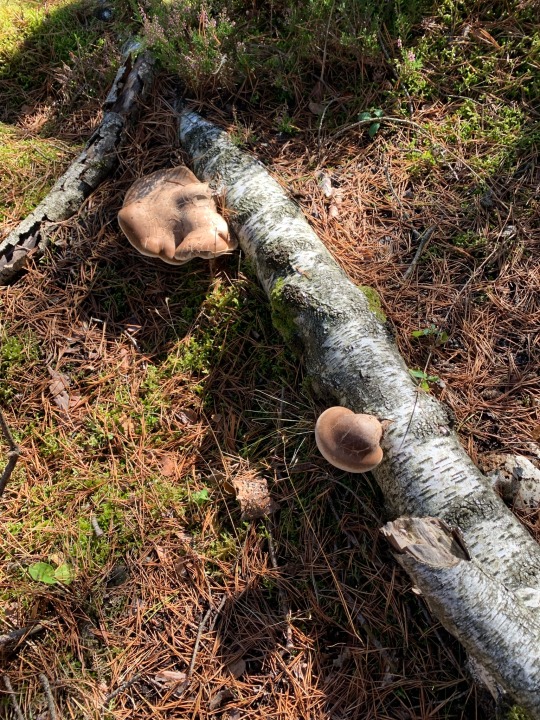
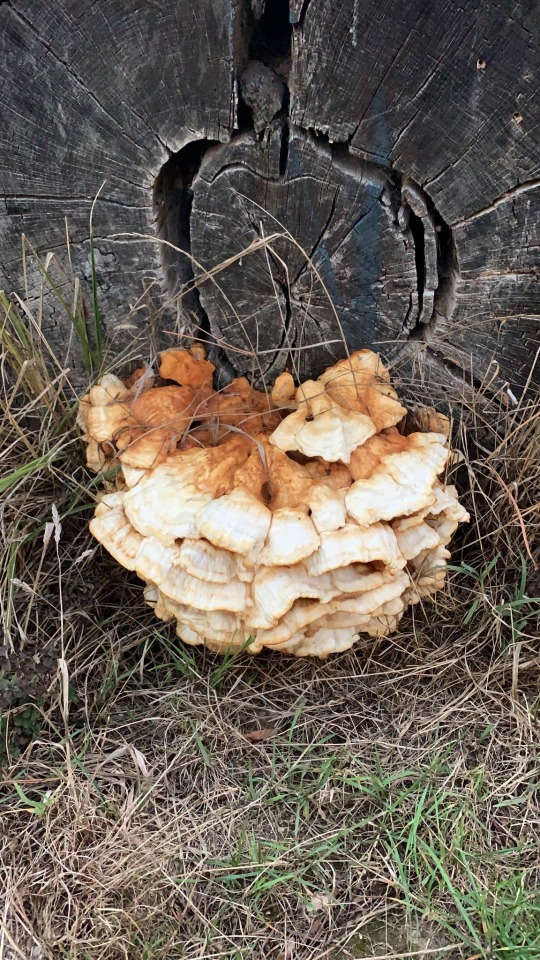

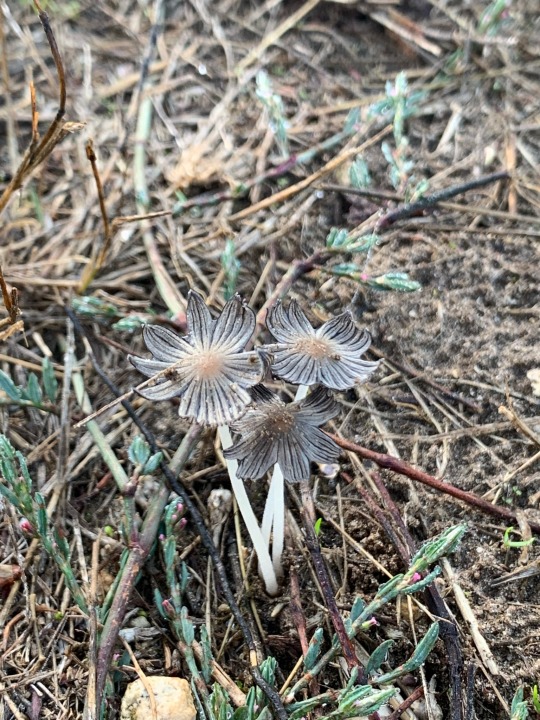
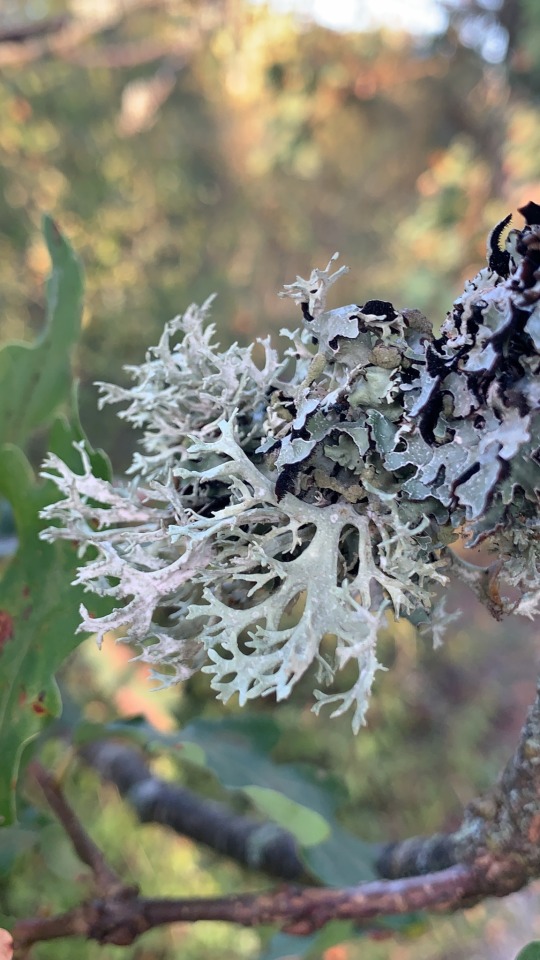

some fungi found in Fontainebleau
left to right, top to bottom:
- birch polypore / polypore du bouleau / fomitipsis betulina
- unidentified polypore
- hoof fungus / amadouvier / fomes fomentarius
- pleated inkcap / coprin plissé / parasola plicatilis
- oakmoss (longer lichen) & shield lichen / mousse de chêne et parmélie à sillons / evernia prunastri & parmelia sulcata
- turkey tails / polypore versicolore / trametes vercicolor
4 notes
·
View notes
Text
I found a lichen! It’s so cool! :D
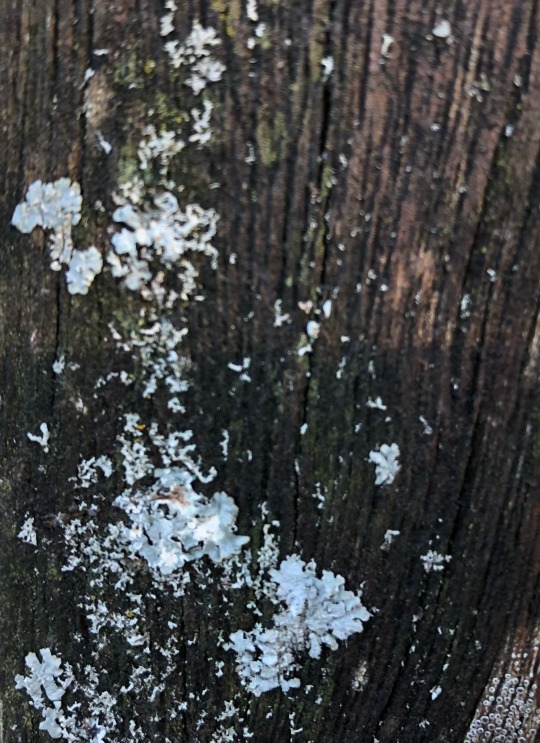
I think this one is parmelia sulcata. It’s one of the most common ones, so this isn’t that interesting of a find.
I don’t really care though- this is the first visible fungus (though it’s more of a relationship between algae and fungi) that I’ve seen since I got interested in them!
These lichen can grow on all sorts of surfaces, and can survive higher levels of pollution- that’s why they’re so common!
sorry for all the exclamation marks i’m just really excited about this
7 notes
·
View notes
Photo


Parmelia sulcata on an apple branch. AKA hammered shield, cracked-shield, powdered crottle, furrowed shield, powdered shield, and waxpaper lichen.
29 notes
·
View notes
Photo

Okay y’all, I know lichens/fungi aren’t technically botany but I’m super proud of this and I want to share! Top to bottom: Parmotrema, Usnea, Parmelia sulcata, Stereum. All from a little hike I took 03/04/2017 near Bellevue, WA.
#lichens#fungi#not botany#ohwell#nature#pnw#pnwonderland#upperleftusa#parmotrema#usnea#parmelia sulcata#stereum
144 notes
·
View notes
Note
tells us more about lichenology please
i'm by no means a scientist or even educated in biology past the most rudimentary high school level so my understanding and study of lichens is that of an artist and layperson.
my focus has been on the use of lichens for textile dyeing specifically, but in order to ethically and correctly collect lichen for dyeing i have to be able to identify them at least by their genus for a few major reasons. primarily, as an artist, different species need to be processed in different ways to produce colours unique to them. some species don't produce any colour when processed one way and produce vivid colour in another; others produce wildly different colours in different contexts. secondarily, from an ecological perspective, its important to know how common/rare different lichen are so you don't unknowingly destroy a rare and old organism, and there are ways of harvesting parts of lichen without damaging the thallus or body of the lichen so it can continue to grow if you learn how to do so but it's best to collect lichen that have already fallen off their substrate or are on substrate soon to be destroyed (ex. fallen trees, lumber, etc.)

[image id: diagram showing the various common types of lichen growing on a bark or tree substrate: crustose or crusty lichen, foliose or leaf-like lichen, and frucitose or bushy lichen. the crustose lichen are very flat and bumpy, while the foliose lichen have flat little leaf-like parts branching across the bark. the bushy lichen sticks out from the bark and can resemble either a shrubby moss ball or a large branching piece of coral. /end id]
as organisms, lichen are weird because they're not one singular organism but rather a composite of algae or cyanobacteria and fungal spores that spontaneously develop a symbiotic relationship with each other and become something that is neither algae nor fungi but its own 'thing' altogether with unique characteristics. they are so complex that they can be considered mini ecosystems within themselves. they come in a variety of forms but the most common are crustose, foliose, and frucitose. many lichen species look very similar with minor differences that can only be ascertained through chemical testing (ie. placing a drop of specific chemicals on the thallus and seeing what colours appear), while others are more easily identifiable. some resemble moss and are often mistaken for moss, but they are fundamentally different organisms.
different species are native to different habitats and all lichen species use specific surfaces as their substrate (bark, rocks, soil, etc.) these are photos i took the other day in southern ontario, canada, and the lichens in both images use bark as their substrate. all of the lichen i've identified so far are foliose, or leaf-like, lichen.


[image id: the image on the left shows a bright yellow circular lichen that i've identified as xanthoria parietina (common sunburst lichen) while the image on the right shows pale grey branching lichens that i've identified as physcia stellaris (star rosette lichen). /end id]
there are 3 ways of processing lichen for dyeing: the boiling water method, ammonia method, and photo-oxidation method. boiling water method is exactly how it sounds and is the most common method used in natural dyeing; it typically produces yellows, oranges, and deep rusty browns/reds. the ammonia method requires filling a jar with a mixture of lichen, household ammonia (historically it was urine) and water and shaking the jar every day to oxygenate the mixture, turning the lichen acids into dye pigment; this is left to 'ferment' over the course of weeks or months, depending on the species, amount of oxygen, and amount of lichen. over time the mixture eventually produces dyes that are vivid neon pinks and purples. the final type is photo-oxidation, which only works with a few specific genera of lichen, as they contain an interesting UV-reactive acid that causes things dyed with them to go from pink to purple to bluish-grey when exposed to sunlight.

[image id: a flatlay showing seven bundles of various yarns dyed with lichen. the leftmost yarn is bare white and undyed, the next two are bright pink and purple, and the last four are various shades of greenish-browns and orange. in each bundle there is a thicker yarn that is highly pigmented and a few other thinner yarns that are more pale in colour. /end id]
there are different ways of figuring out the dyeing process required for each lichen species, the most involved of which is the same chemical test method mentioned above. i won't go into detail about the chemistry aspect because i don't have my book on it to reference right now, but essentially, specific chemical reactions tell you what dye pigments a lichen species will produce when processed. for example, the xanthoria (above left) is a species that contains the UV-reactive acid that means fibre dyed with it will photo-oxidize. the physcia is a boiling water method lichen that produces yellows dye.
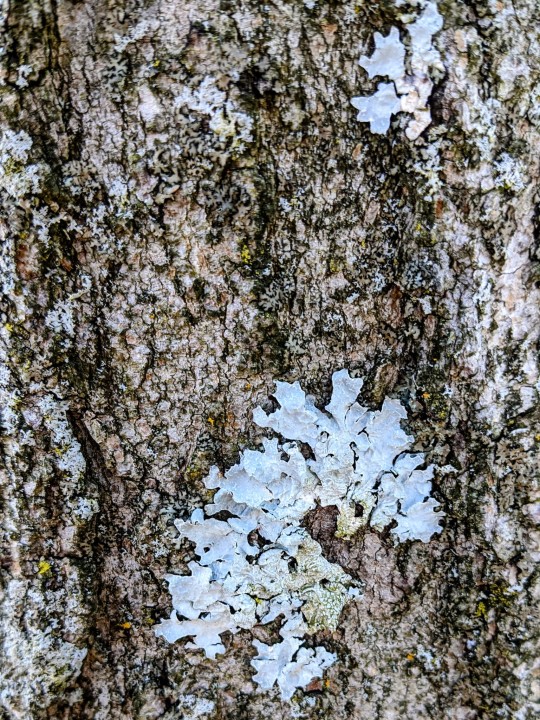


here are some other lichens i recently identified: the light grey flat branching lichen is called parmelia sulcata (common shield lichen) and it produces reddish-brown dye using the boiling water method. various indigenous peoples of north america use it as a medicine; the metis have used it to soothe the gums of teething babies and the wsanec people use it for a variety of ailments depending on the tree it was harvested from. the very similar looking pale green lichen is called flavoparmelia caperata (common greenshield lichen) and it makes a very pale yellowish-brown dye using the boiling water method.
i'm still learning and have yet to actually collect lichen for dyeing as i've been primarily practicing identification and learning more about the various dyeing processes and the chemistry of it in my free time so any of my identifications could be wrong but i feel fairly confident in them overall.
#long post#lichen#mycology#tex help#deepest apologies to anyone scrolling past this monstrosity of a post <3
361 notes
·
View notes
Text


Day One part 1/4 : the first time i search and find lichens, a beech branch, whit 4 (i think) different mushrooms on it.
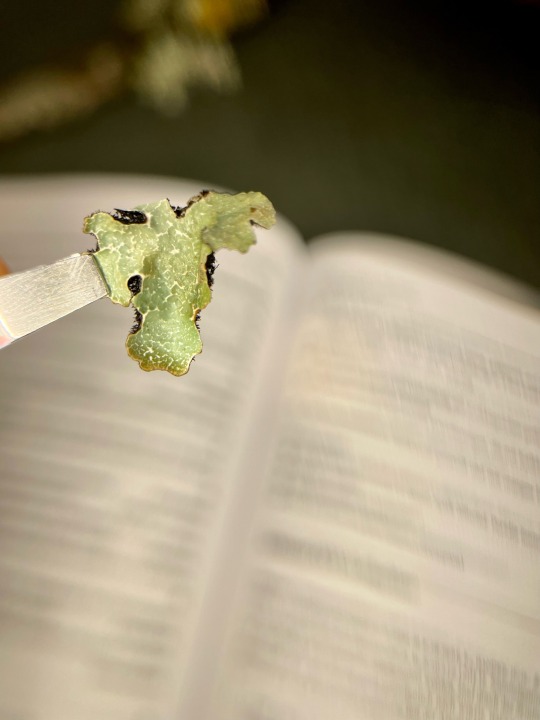

Hard to learn and how to find out how to work and fix it. I have about 3 days for the basic knowledge of lichens. I think i know nothing😂😅
These have to be: Sulcatflechte, parmelia sulcata. With KOH 20% first yellow, later red.
Please say if iam wrong
#part 1/4#mushrooms#pilze#mycology#fungi#pilz#wild fungi#lichen#pilzesuchen#mushrooms switzerland#mushrooms of switzerland#sulcatflechte#parmelia
4 notes
·
View notes
Photo


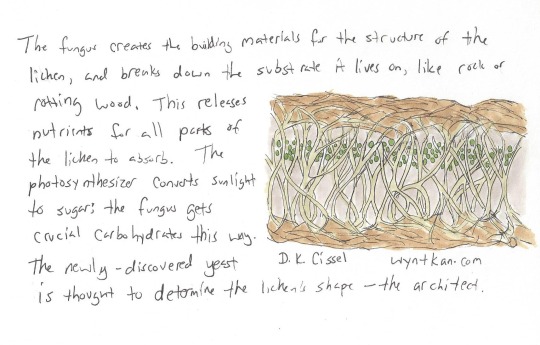
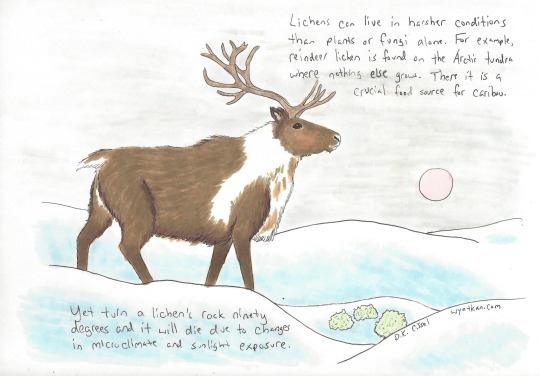
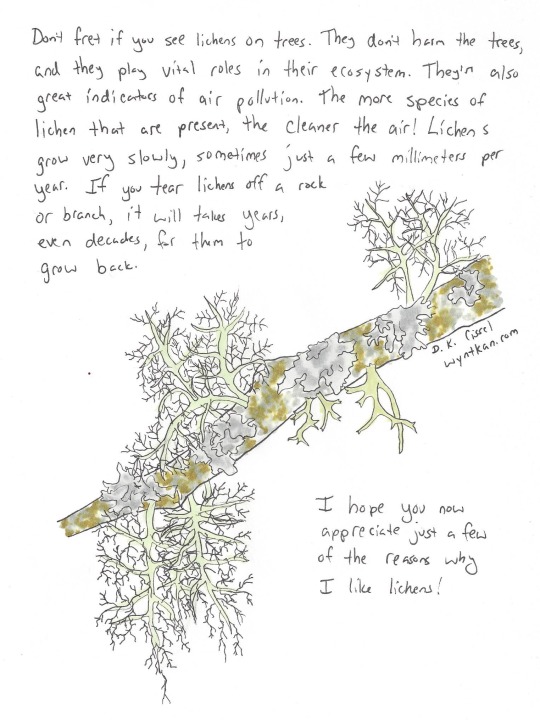
Lichens are incredible beings, as far as I'm concerned, and some of the most misunderstood and overlooked as well. I appreciate their complexity and tenacity, and I also think they're pretty, too! I'm very lucky that there's a lot of lichen diversity where I live; I am in a place with several microbiomes, and so it's neat seeing which species I find in each. Plus it's a good sign that the air here is clean, too.
I do have to say that as a citizen-level naturalist rather than a lichenologist, I sometimes feel a bit overwhelmed by how some lichens are so similar that you basically need a microscope to tell two species apart. I once went out into the woods with my copy of Macrolichens of the Pacific Northwest, intent on identifying all the lichens I found, and while I was able to nail down some, there were others that I just wasn't able to get a species-level ID on. (And then I uploaded pictures to iNaturalist and let the experts tell me what I was missing!)
Admittedly, if I had infinite amounts of time and money and could go back to school (again), I'd strongly consider mycology with an emphasis on lichenology. But then again I'm also tempted by the bryophyte end of the botany pool. And marine biology is pretty neat, too. Also restoration ecology...you know, maybe it's better that I just opted to be a Master Naturalist. I don't have to choose a specialty, and it didn't cost nearly as much!
Species portrayed: Questionable rock-frog (Xanthoparmelia cumberlandia), old man's beard (Usnea spp.), red alder (Alnus rubra), pixie cup lichen (Cladonia asahinae), reindeer moss (Cladonia rangiferina), caribou (Rangifer tarandus), hammered shield lichen (Parmelia sulcata), oakmoss (Evernia prunastri), assorted microlichens
159 notes
·
View notes
Text

#nature#nature core#nature photography#nature photos#naturecore#original photo blog#lichen#parmelia sulcata#vulpicida pinastri#powdered sunshine lichen
0 notes
Photo
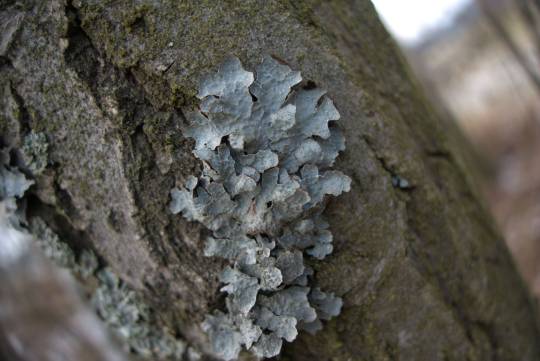
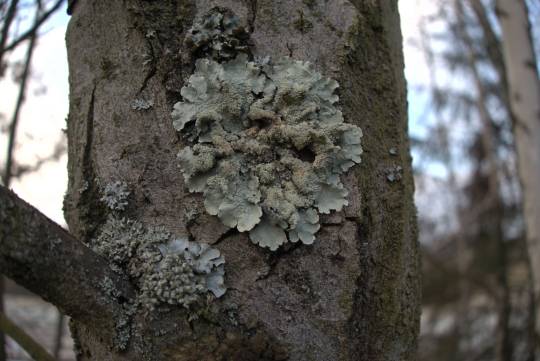
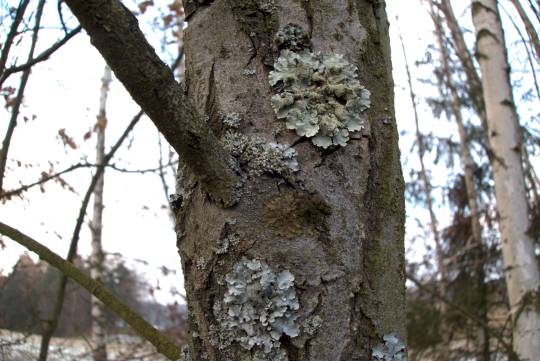
lichens living their merry life on the bark of a tree(Salix i believe)
the first image should be a Parmelia sulcata
i am confused about the second one, as the color is slightly off, so just a Parmelia it is. But you can see tufts of Physcia in the down left corner
the swampy green lichen might be a Melanelixia
2 notes
·
View notes
Photo




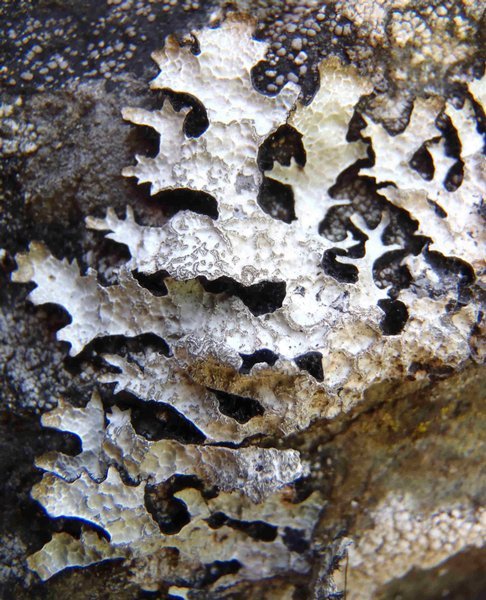

Parmelia sulcata
Parmelia lichens are super common, but that doesn’t mean that you shouldn’t stop and get a closer look at them when you come across one. Otherwise you might miss all the gorgeous detail you can see here in P. sulcata. This foliose lichen has a smooth or delicately pitted surface distinctibly lined with branching patterns of soralia--in fact the name “sulcata” refers to presence of “longitudinal parallel grooves” such as these. The upper surface is greenish or pale gray, often tinged with brownish-orange along margins. Apotheica are rare, but typically have a sorediate margin and a brown disc. P. sulcata grows on trees and occasionally rocks in temperate to boreal regions all over the world. It is super tolerant of a host of conditions, and is often found on trees in urban areas. So I can almost guarantee you could go out and find some on a nearby tree right now, you lucky duck. Get out there and enjoy some P. sulcata viewing--you deserve it.
images: source | source | source
info: source | source
#lichen#lichens#lichenology#lichenologist#lichenized fungus#fungus#fungi#mycology#ecology#biology#botany#bryology#biodiversity#systematics#taxonomy#life science#natural science#urban biology#nature#naturalist#beautiful nature#weird nature#Parmelia#Parmelia sulcata#I'm lichen it#lichen a day#daily lichen post#go outside#look for lichens#see the world slowly
100 notes
·
View notes
Text
Your Garden Isn’t Winding Down: It’s Still Lichen Season

Unpainted wood garden furniture is a popular substrate for colonies of certain lichens, including common greenshield (Flavoparmelia caperata), spangled rosette (Physcia millegrana), hammered shield (Parmelia sulcata) and a crustose species called Lecanora strobilina.
“What are lichens? They are neither plant nor animal. If that doesn’t make them inscrutable enough, there is also this: A lichen might, at first glance, be mistaken for an errant wad of chewing gum or a misplaced splatter of paint.But they are very much living creatures and are thought to be one of the earliest land-dwelling forms of life. They are among the most widespread, too, present on every continent, covering an estimated 8 percent of the planet’s land. They inhabit even Antarctica and the harshest deserts, including some places where plants and animals cannot thrive. Closer to home, you may find them happily taking up residence on your wooden garden bench or picket fence, stone walls or other rock surfaces, or on the trunks and branches of trees and shrubs. ...”
NY Times
W - Lichen
PBS: For the Love of Lichens (Video)

Rhizocarpon geographicum
0 notes
Photo
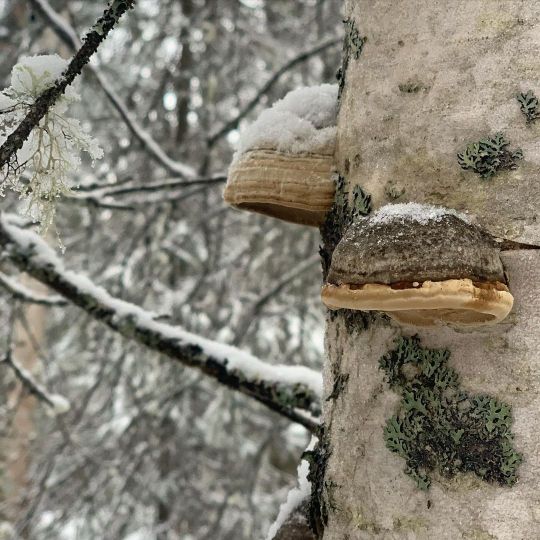
Fomes Fomentaria (tinder or shelf mushroom. Usnea Longissima (old man’s beard) Parmelia Sulcata (slated shield lichen) All on display. . . . . #hikealaska #travelalaska #nature #lichen #fungus #visitanchorage #exploreyourwild #forests (at Barbara Falls) https://www.instagram.com/p/CKI-Z2QHvH-/?igshid=rm0gnwvffbj4
0 notes
